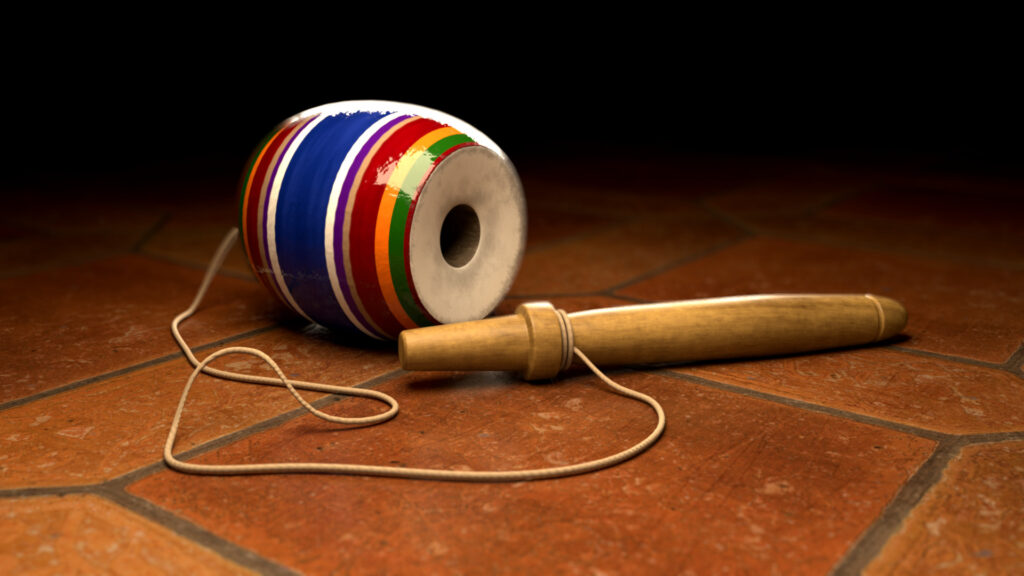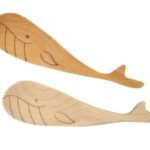The balero, a traditional toy cherished across generations, is more than just a simple game—it’s a symbol of heritage, skill, and timeless entertainment. With roots stretching back centuries, this charming toy has captured the imagination of children and adults alike, transcending cultures and adapting to the modern era.
In this article, we explore the fascinating history of the balero, its cultural significance, and its enduring appeal in the age of digital distractions.
What is a Balero?
The balero is a handheld toy consisting of a wooden cup (or cone) attached to a stick by a string. The goal is simple yet challenging: swing the cup into the air and catch it on the stick.
Anatomy of a Balero:
- Cup or Body: Often made from wood or plastic, designed to balance perfectly for skillful catches.
- Stick or Handle: A slender rod for holding and maneuvering the toy.
- String: Connects the cup to the stick, ensuring it remains tethered during play.
This straightforward design is what makes the balero both accessible and endlessly engaging.
Origins
The balero has a rich history that spans continents, with its origins believed to date back to indigenous cultures.
Ancient Beginnings:
- Mesoamerican Roots: Archaeological evidence suggests that early versions of the balero were used by indigenous peoples in Mexico as both a game and a tool for hand-eye coordination.
- Global Variations: Similar toys appeared in other cultures, such as the Japanese kendama and the French bilboquet, each with unique regional twists.
These early iterations highlight the universal appeal of skill-based games across civilizations.
in Mexican Culture
In Mexico, the balero holds a special place as a cultural artifact and a cherished pastime.
A Symbol of Tradition:
- Handcrafted Beauty: Traditional baleros are often carved and painted by artisans, showcasing intricate designs and vibrant colors.
- Fairs and Festivals: Balero competitions are a popular feature at cultural events, where participants of all ages test their skills.
- Childhood Memories: For many, the balero is a nostalgic reminder of simpler times, playing outdoors with friends and family.
Its enduring presence in Mexican culture underscores its importance as more than just a toy.
The Evolution of Balero
While the balero’s design has remained largely unchanged, its materials and role in society have evolved over time.
Modern Adaptations:
- New Materials: Traditional wood has been complemented by plastic and metal, making baleros more durable and accessible.
- Custom Designs: Contemporary baleros come in a variety of shapes and themes, appealing to younger audiences and collectors.
- Digital Revival: Social media and online tutorials have brought renewed interest in the balero, inspiring a new generation of players.
These updates ensure that the balero continues to thrive in a rapidly changing world.
Why the Balero Endures
The balero’s timeless appeal lies in its simplicity, challenge, and versatility.
Key Reasons:
- Accessible Fun: Suitable for players of all skill levels, from beginners to seasoned experts.
- Skill Development: Enhances hand-eye coordination, focus, and patience.
- Universal Appeal: Its basic concept transcends language and cultural barriers, making it a global favorite.
In a world dominated by screens and technology, the balero offers a refreshing return to hands-on, active play.
as an Educational Tool
Beyond its entertainment value, the balero serves as a valuable educational tool in various settings.
Learning Through Play:
- Motor Skills: Helps young children develop fine motor control and dexterity.
- Problem-Solving: Encourages strategic thinking as players refine their techniques.
- Cultural Awareness: Introduces players to the rich traditions and history behind the toy.
Teachers and parents often use the balero as a way to combine fun and learning, making it a hit in classrooms and homes alike.
How to Play
Mastering it takes practice, but the process is as enjoyable as the success.
Basic Steps:
- Grip the Stick: Hold the handle firmly but comfortably.
- Swing the Cup: Use a controlled motion to send the cup into the air.
- Aim and Catch: Focus on aligning the cup with the stick for a successful catch.
Tips for Beginners:
- Start with small, gentle swings to build confidence.
- Watch experienced players to pick up techniques.
- Practice regularly to improve coordination and accuracy.
The sense of accomplishment after landing a successful catch makes every effort worthwhile.
In Pop Culture
The balero has also made appearances in pop culture, highlighting its enduring relevance.
Examples:
- Movies and TV: Featured in scenes that showcase traditional Mexican culture.
- Art and Literature: Often depicted in works celebrating childhood and heritage.
- Social Media: Viral videos of balero tricks have introduced the toy to a global audience.
These representations help keep the balero in the spotlight, ensuring its legacy endures.
Conclusion
The balero is more than a toy—it’s a bridge between past and present, tradition and fun. From its humble beginnings in ancient cultures to its role as a beloved pastime today, the balero continues to captivate hearts around the world.
Whether you’re a seasoned player or discovering it for the first time, the balero offers endless opportunities for skill, connection, and joy. So pick one up, give it a swing, and experience the timeless magic of this iconic toy.







